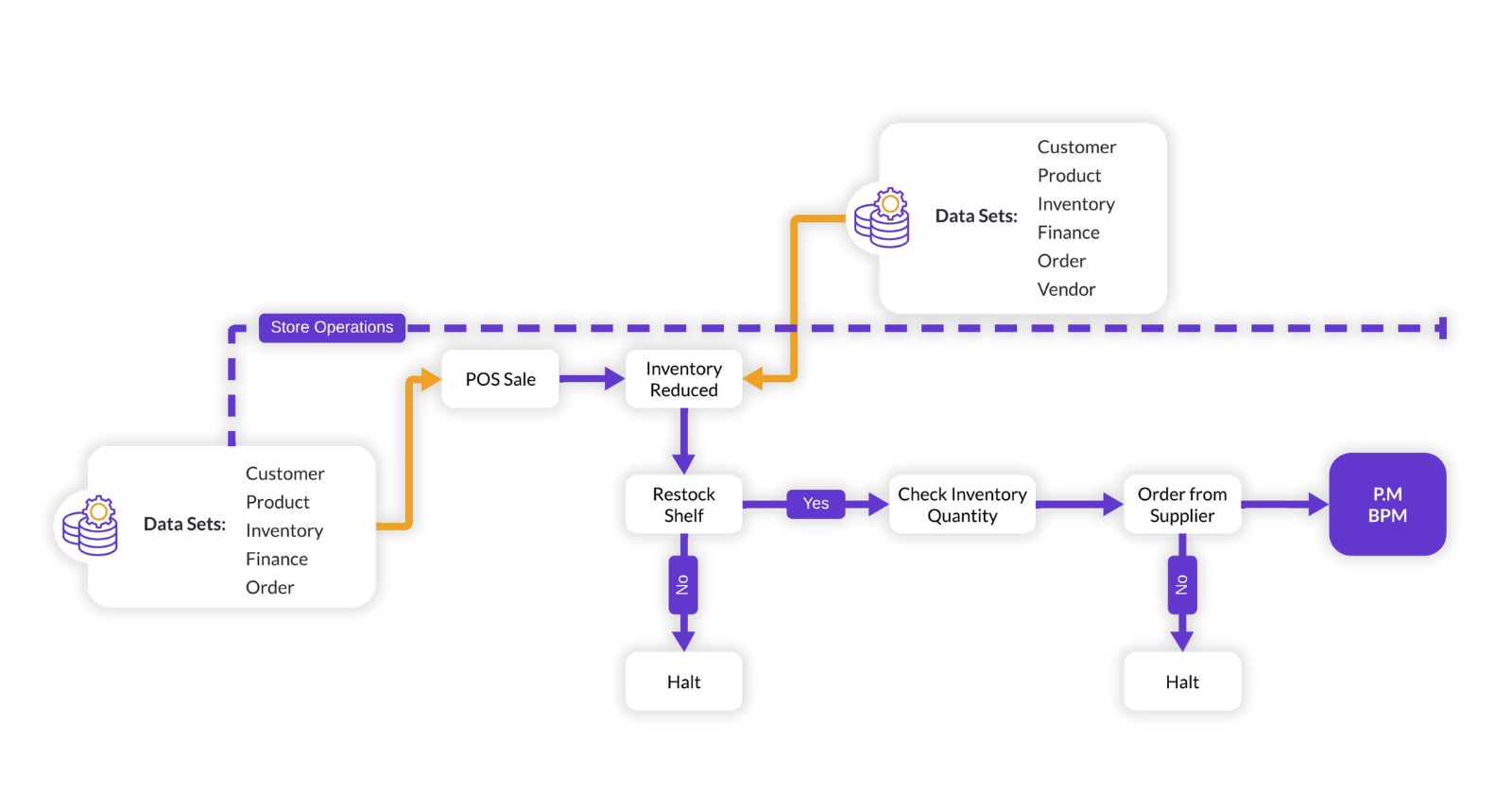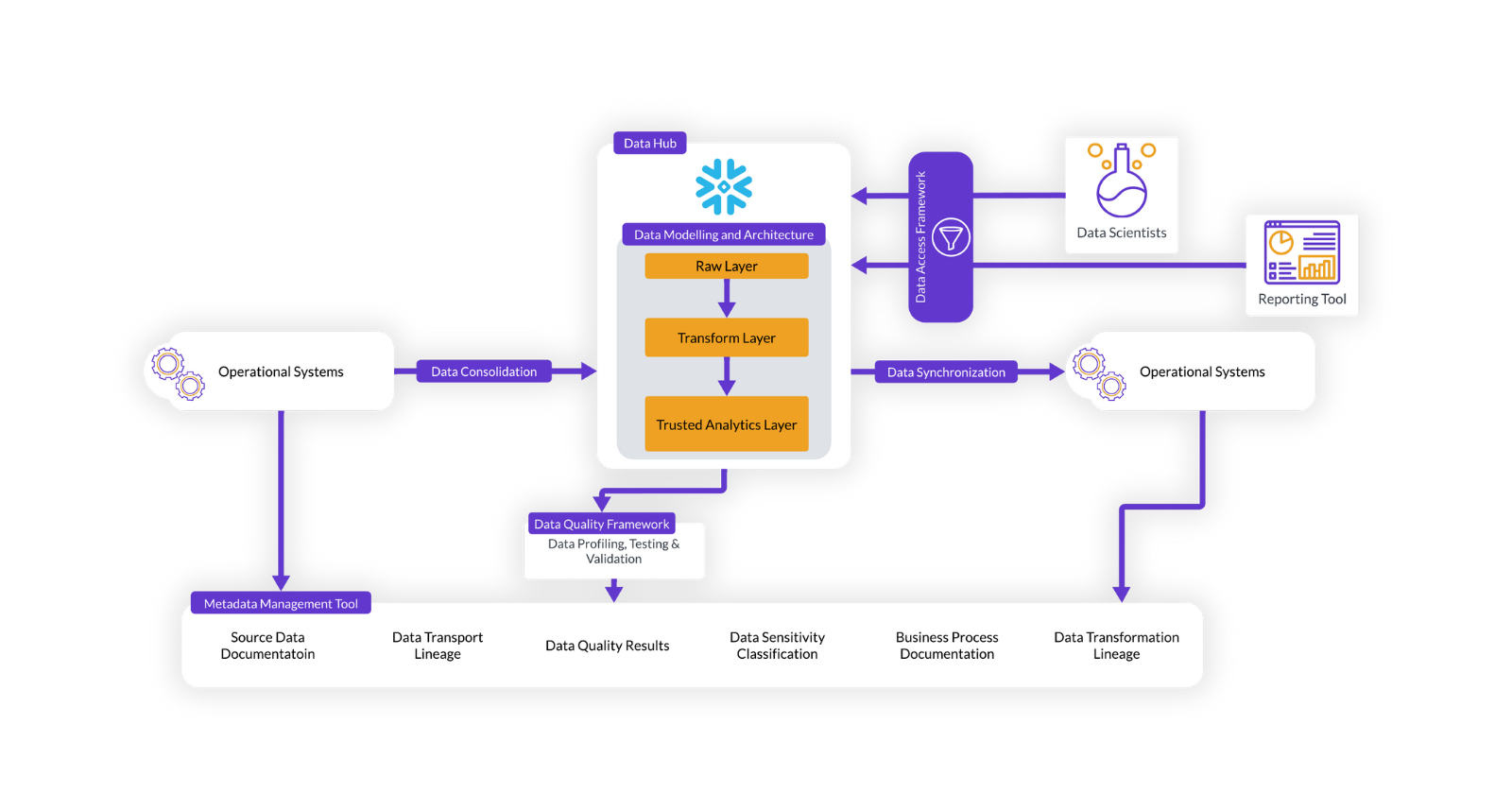What is Master Data Management (MDM)
Master Data Management (MDM) is a set of technological and organizational policies and practices that ensure an organization's most valuable data is consistent, accurate, and useful. MDM ensures data quality, enhances decision-making, and supports seamless change management.
Benefits of MDM
Organizations choose to implement MDM strategies to:
-
Understand & support cross-functional business processes
-
Provide consistent and accurate reporting and analytics
-
Enforce internal data use policies and regulatory compliance
-
Ensure smooth change management for critical business & technical processes
Master Data Management may look different at different organizational scales.
In early-stage companies, MDM may not yet be defined as a separate practice. However, data management responsibilities may fall on the data science or engineering teams.
As companies scale, privacy or data quality teams may carry out functional ownership before a dedicated data governance or master data management function is defined.
Whatever your journey to MDM looks like, Infostrux can help!
Our approach is to deeply understand our client's unique needs and strategically advise them to meet the governance requirements.
Our engineers will help you define the criteria to select the best tooling for your needs and help implement it. We work with your data science and engineering teams and other internal data stakeholders to ensure the right MDM practices are adopted across your organization.
Lack of MDM strategy exposes organizations to risks
Good MDM will ensure your organization can function & collaborate effectively. MDM allows wide cross-functional groups to capture all the upstream & downstream relationships.
MDM enables developers to gain business context and relevant data assets quickly. Lack of good MDM exposes organizations to the following risks:
Data Inconsistency & Redundancy
Confusion and errors due to inconsistent data. Increased costs due to storage and handling of duplicate data and resource-intensive data management.
Poor Data Quality & Compromised Decision-Making
Incorrect insights due to poor data quality can steer in the wrong direction.
Inefficient Business Processes
Fragmented operations and delays due to manual data movement or correction.
Compliance & Regulatory Risks
Legal penalties and reputational damage due to mishandling of customer data.
Customer Dissatisfaction
Poor service and loss of trust in the data platform lead to dissatisfaction with data teams and further influence business units to set up fragmented operations.
Lack of visibility & Control
No holistic view of where data is stored, how it is moved between systems, or how insights are derived.
Retail Case Study
Using real-time sales data and inventory forecasts, optimize the Ordering Process
to maximize expected sales and maintain a healthy “Days Inventory Outstanding (DIO)”

Key Components of MDM
MDM implementation strategies must mirror the organizational and data management goals. Settling on the wrong approach may prolong implementation time. Infostrux partners with our clients to select the right MDM implementation strategy.
MDM implementation strategies are typically comprised of the following components
Data Consolidation
Integrate data from multiple sources for centralized access and management.
For a retail company, this would include sales & stocking data from all storefronts, inventory levels for all products in all warehouses, ordering & supplier relationship data
Data Modeling
and Architecture
Design & implement data warehousing models & combine data from disparate sources to calculate various metrics.
To optimize an Ordering Process, we calculate Sales Velocity, Days Inventory on Hand, Order Lead Time, and Days Outstanding Inventory by combining store POS and warehouse management systems data.
Data Synchronization
Integrate master data back into operational tools to support business operations.
The calculated Days Outstanding Inventory is synchronized to the Supplier Relationship Tool to automate order submissions based on inventory levels.
Data Quality Framework
Ensure accuracy, reliability, and freshness of data across various physical and logical systems through automated testing and anomaly detection.
Data from any system may become obsolete or inaccurate due to various reasons (e.g., Inventory Shrink is not measured until periodic recounts or Order Lead Time changes due to manufacturing delays). Outdated data may trigger the Order Process incorrectly unless a robust Data Quality Framework is implemented to catch data errors.
Data Governance
Establish policies and procedures for business glossary, data quality management, and business process management. Ensure the policies are documented in a central, accessible location
The Ordering Process, related data models, data pipelines & data quality framework need to get cross-functional agreement and documented centrally.
Metadata Management
Manage data definitions, classifications, transformation logic, lineage, pipeline results, and usage metrics.
The metadata tool becomes a central source of truth for how various processes work.
Data Access Framework
Ensure access and use of data comply with internal policies and regulatory requirements.
Any PII collected by the POS systems during a sales transaction should be treated according to GDPR, CCPA, and other consumer data protection regulations



